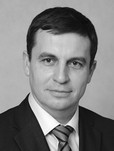Muscular strength building pace in 12-16 year old males versus the nervous system types strength growth rates in 12–16 year-old males differing in typological complexes of nervous system properties
Фотографии:
ˑ:
PhD, Associate Professor E.M. Revenko1
Dr.Hab., Professor V.A. Salnikov1
1Siberian State Automobile and Highway Academy (SibADI), Omsk
Objective of the study was to rate the muscular strength building pace in 12-16 year old males versus types of nervous system. Sampled for the study (run in 2007-16) were the 12/ 14/ 16 year old students (n=87/ 78/ 104, respectively, n=269 in total) of Lyceum #149 in Omsk city. The prior (fist-stage) tests in September were applied to estimate the background muscular strength in the sample. The second-stage tests were run in May to estimate muscular strength progress of each group.
The study data showed the muscular strength progress of the male sample being the type of nervous system and age specific, with a special progress in cased of a progress-facilitating type of nervous system type (with every its function acting in the same way). The study findings give us the grounds to believe that the relevant training systems shall be designed on an age- and nervous system type-specific basis to effectively facilitate progress in motor skills.
Based on the study findings, we recommend that the individual physical progress should be facilitated by the training system designs making a special emphasis on the individual age-specific developmental specifics rather than the age group only. The study findings, as we believe, make an important contribution to the meaning and interpretation of the age group standard and give grounds to effectively improve the physical education models on an individualized basis.
Keywords: muscular strength, growth rate, differences, nervous system qualities, nervous system type, age group.
References
- Drizhika A.G. Teoretiko-metodologicheskie osnovy i praktika individualizatsii protsessa podgotovki kvalifitsirovannykh sportsmenov [Theoretical and methodological fundamentals and practice of individualization of skilled athletes' training process] Doct. diss. (Psych.). Rostov n/D., 2005. 333 p.
- Ilyin E.P. Differentsialnaya psikhofiziologiya [Differential psychophysiology]. St. Petersburg: Piter publ., 2001. 464 p.
- Ilyin E.P. Psikhomotornaya organizatsiya cheloveka [Psychomotor organization in man]. St. Petersburg: Piter publ., 2003. 384 p.
- Revenko E.M., Zelova T.F., Salnikov V.A. Vozrastnye osobennosti ishodnykh urovney i tempov prirosta dvigatelnykh sposobnostey yunoshey, razlichayushchikhsya tipologicheskimi svoystvami nervnoy sistemy [Developmental characteristics of initial levels and rates of growth in motor abilities of young men based on typological properties of nervous system]. Uchenye zapiski universiteta im. P.F. Lesgafta. 2018. no. 8. pp. 161–169.
- Salnikov V.A. Individualnye osobennosti vozrastnogo razvitiya [Individual features of age-related development]. Omsk: SibSAHA publ., 2013. 411 p.




 Журнал "THEORY AND PRACTICE
Журнал "THEORY AND PRACTICE